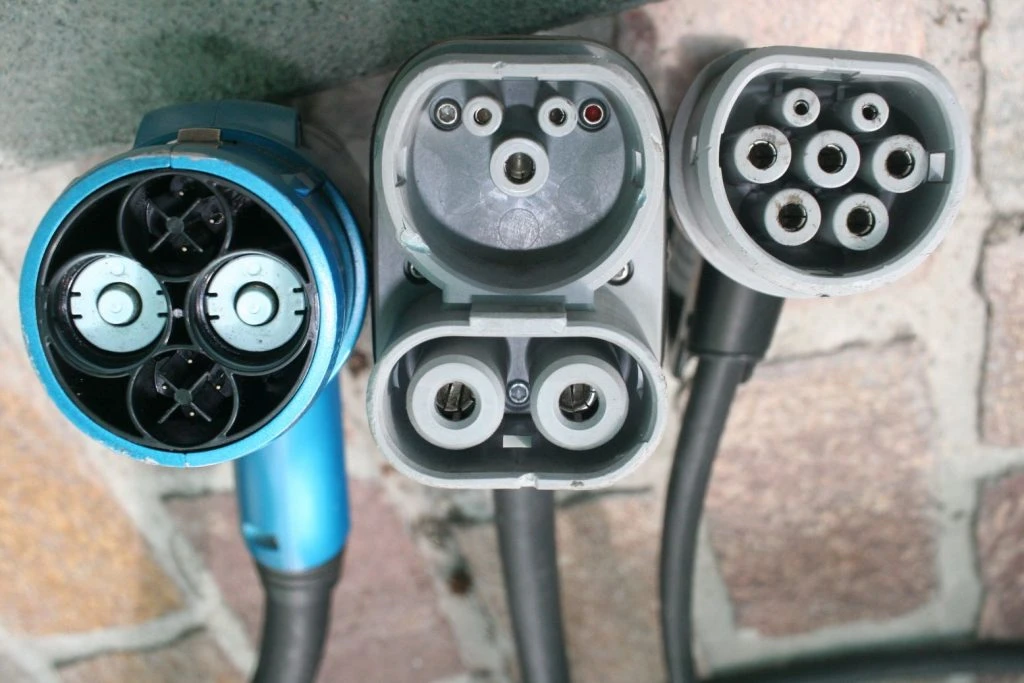Plugging In A Plug-In
Like anything else with batteries, an EV of the PHEV or BEV type (i.e., plug-in hybrid EVs and full battery EVs), will need to be plugged in and charged. In my previous article, I talked about the different types of charger and the different charging speeds.
However, there’s more to know if you’re new to the world of EVs and plugging in instead of filling up. This is because different vehicles have different types of connectors or plugs. Obviously, you can only plug into something that has a compatible connector. This may sound confusing if you’re used to filling up a petrol or diesel tank, where one size fits all. However, if you’re used to negotiating all those different cables and chargers for Android phones, Apple phones, USB chargers and HDMI cables, then you will easily get the hang of the different connector types used in EVs.
There are a few basic types: Type 1, Type 2, CCS 2 and CHAdeMO. All of these have different pin patterns, meaning that you can’t plug the wrong one in by mistake (kind of makes you wish they had done something similar with ICE vehicles so that nobody put petrol in a diesel tank or vice versa).

Type 1 AC connectors are also known as J1772 or SAE J1772 connectors, or just J plugs. They are mostly found on older EVs and PHEVs. The connector has five pins that look a bit like a smiley face.
Type 2 AC connectors are also called Mennekes connectors after the German company that invented them. They look a bit like a mutant hair dryer. They are the standard connector in Australia and Europe found on most EVs sold in the country today. Type 2 Mennekes connectors is often found in combination with the CCS connector – if you look carefully, you can see that the “surprised face” circles in the top part of the CCS connector combo is hidden in the seven circles of the Mennekes connector.
Tesla connectors are based on the Type 2 connector to allow you to use it to charge a Tesla at home via AC charging but has a special lock-out design for the DC chargers, meaning that only Teslas can charge up from the dedicated Tesla DC ultrafast charging systems.
CCS stands for combined charging system. The bottom half of a CCS connector allows for fast DC charging from public outlets, while the top half is for AC charging. Although it is possible to find EV models that have Type 1 up the top and the DC connector down the bottom, these are very rare in the Australian market. Most EVs in Australia that have these CCS connectors (technically, these are CCS 2 connectors) will have a Type 2 pin arrangement up the top.
CHAdeMO connectors get their name from the French phrase “Charge de Move” (“movement using charge”). Rumour also has it that it was derived from the Japanese phrase “o cha demo ikaga desuka”, which means “How about a cup of tea?”, as the idea was that charging with a CHAdeMO charger would take as long as having a cup of tea. I don’t know how long it takes you to have a cup of tea, but I don’t think they’re referring to the full Japanese tea ceremony here, which can take up to four hours. However, the CHAdeMO connector is used for DC fast charging, which can take about half an hour. These connectors are mostly found on earlier Japanese models such as the Nissan Leaf.
When you buy an EV, it will probably come with at least one cable so you can plug it in and get started. However, it’s often a good idea to have a range of different cables with different connectors. For example, you can get a cable that can plug into a Type 1 outlet even though you’ve got a Type 2 input in your EV, or one with Type 2 at both ends for public charging stations where BYO cable is the expected way to proceed. If you’re anything like me when it comes to cables and remembering what goes in where, it might be a good idea to attach a label or colour-code the different cables if you have several, and to store them in separate bags.